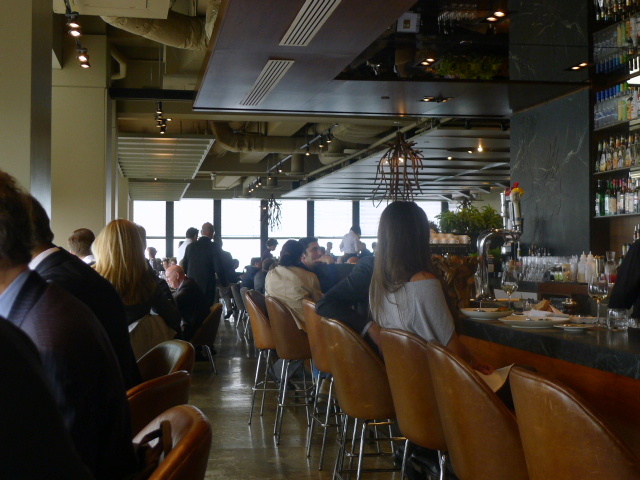
View of the Shangri-La
Momofuku is a household name. The first of the Momofuku restaurants opened in New York in 2004 and within a year it had captured the public’s imagination with its innovative approach to Japanese noodles. Chef and owner David Chang had spent some time cooking at a soba bar in Tokyo, which was the source of his inspiration for Momofuku, a term that translates as lucky peach. A second restaurant soon followed in 2006. Known as Momofuku Ssäm Bar and serving burrito-style Asian food, it again tantalised the public with its originality. More successful than the first, Momofuku Ssäm Bar headed into the San Pellegrino’s 50 Best Restaurants list in 2009. It held onto a top 50 position until 2013 when it dropped to 86th.
But Chang’s third restaurant, Momofuku Ko, was to become his pièce de résistance. Opening in New York in 2008 as a tiny 12 seater that only accepted reservations six days in advance on an ‘online first-come-first-serve’ basis – a policy that infuriated many – it went on to win two Michelin stars, cementing Momofuku’s worldwide fame.
When a restaurant becomes that famous, the only way to go is to think like Nobu and franchise. Consequently restaurants have sprung up in Sydney and Toronto with four Momofuku branches in Toronto alone: the Noodle Bar, Daisho, Nikai (the bar) and Shoto. The latter was recently revered as the best restaurant in Toronto and offers a 10-course tasting menu that changes daily. It is the more food-centric of the Toronto Momofukus and while it sounded good, it also has a painful ‘you must go online to book at 10am on the day policy’. So we decided on Momofuku Daisho, the more casual dining restaurant where the reservations policy is far less stringent.
Momofuku in Toronto stands adjacent to the glamorous Toronto Shangri-La Hotel and spans over three funky floors. Daisho sits on the top floor and its glass ceiling not only gives the space a great sense of light, it also offers a bird’s eye view of the architectural success of the hotel. The menu is group friendly and offers a selection of big format dishes such as bo ssäm, a whole slow cooked pork butt with a dozen oysters, white rice, bibb lettuce and a Korean ‘ssäm’ BBQ sauce (serves 6 to 10, $240 – about £150). But the most delectable sounding of the big format dishes was the prime beef rib-eye which is dry-aged for 65 days and roasted for about 2-3 hour (serves 6 to 8, $600 – about £387). Reading about the big format dishes made my mouth water, but as we were only two we settled on the smaller plates on the menu.
(Continue reading her story…)

